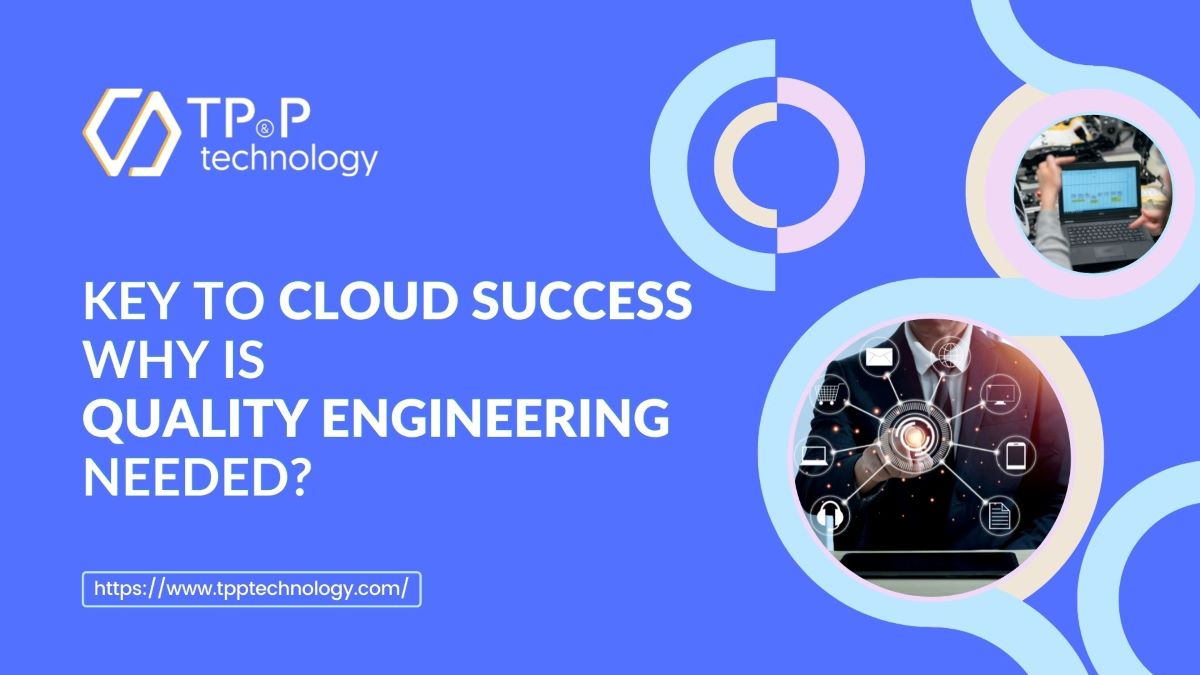
Why A Successful Cloud Strategy Requires Software Engineering?
Spending on "whole cloud" services (encompassing both hardware and software, managed services, etc.) across the globe is predicted to surpass $1.3 trillion by 2025 - according to a forecast by IDC. However, jumping on this bandwagon is not an easy path.
According to a survey from O'Reilly, almost half (48%) of respondents stated that they plan to migrate 50% or more of their applications to the cloud in the coming years. 30% of respondents using cloud technology claimed that their cloud projects budget is the biggest concern.
Following the survey from O'Reilly, we can clearly see that companies need to rigorously focus on the quality of their cloud migration project from the beginning to ensure a successful return on investment, and continue to leverage cloud technology on a daily basis to achieve speed-to-market and business functionality goals.
If they want to do that, quality engineering needs to be adopted. This approach improves traditional testing by inserting quality into all aspects of the process of development. Moreover, this approach can also optimize automation and use Big data and advanced analytics in order to be more accurate about what is being tested.
The goal? To increase quality, reduce cost, and improve time-to-market across the journey to the cloud.
Cloud and On-premise systems: A Quick Comparison
Cloud systems can be more complex, compared to on-premise systems. Many cloud systems are located across multiple locations and can become malfunctioning in unpredictable ways. Thorough planning and effective implementation are needed in the process of leveraging Cloud systems which encompass various different and distributed components and applications, all interacting with the same underlying infrastructure - whereas when it comes to an on-premises data center, all the single components are located in the same place for easier managing.
On the other hand, rapid scalability is one of the key benefits of the Cloud, which enables organizations to scale the resources up or down as needed. For example, during the peak sales season, there are more visitors expected to visit e-commerce platforms, and when it happens, enhanced computer resources are required. With Cloud, Scalability is enabled by continually adding resources to process the additional requests as needed and freeing those resources when they are no longer needed. As a result, conducting promotional marketing and sales campaigns can be much more efficient and productive.
However, there's also the likeliness of consuming more than the needed capacity that is increased by auto-scaling. As a result, companies might end up with a higher than expected bill at the end of the period. Therefore, auto-scaling must be frequently tested and defined to ensure an optimal balance between costs and benefits. Yet, this is not a problem with the local infrastructure since all the hardware and other related costs are paid for and set up upfront.
As a result, quality engineering is essential to optimize and tune utilization to efficiently consume resources and deliver the desired performance at the right cost.
Security is a must
It is important to consider security since many users share resources in a multi-tenant public cloud. Cloud services providers seek to ensure that applications run on the Cloud environment in a secure way, while they invest in the resources and effort to protect the infrastructure.
Therefore, the business organizations that use the Cloud resources are still expected to stay in charge of the security of the Cloud. It is essential for organizations to design and get their software applications built to ensure that their data or sensitive information are not exposed to being used illegally.
Additionally, when organizations opt to use shared resources in a multi-tenant environment full of different users, they have to face the fact that the performances of other components can be negatively affected by simply 'bad' behavior of other separate components. This is the so-called "noisy neighbor" problem. Companies can leverage quality engineering to identify where such problems might occur and proactively solve them.
Testing & QA
It is crucial to make sure software and other business applications are flexible and able to work together, especially, when additional workloads and applications are shifted to the cloud.
For example, software developers and QC/testers need to work together to understand why applications do not function as intended. However, the reason is not always obvious, since system components interact between various spheres in the cloud. Take "time out" as an example, when there is no response after a single component requests the service of another component.
There are several reasons for this delayed response, such as latency or the failure of specific nodes. However, if there is still no response after a component requesting service issues an "additional try" and then repeatedly tries again, the performance of the entire infrastructure could be brought down by this resulting overload.
QE to maximize the cloud value
There is an undeniable fact that Cloud computing solutions can offer advantages that is impossible to achieve in any other way. However, if you look to kick-start your organization's cloud journey, you need to have careful preparation of an overall roadmap of what is needed to achieve success. Specifically, you and your team have to thoroughly understand the implications of the main characteristics of the Cloud services including on-demand services, Multi-tenancy and resource pooling, Rapid elasticity and scalability, broad network, and measured services to operate effectively.
When Cloud services are used in the right way, these features can provide enormous benefits. However, when you build software and business applications running on the cloud to take advantage of those cloud benefits, it's crucial that the development team verify and test the applications to make sure that there are no errors that might arise later.
This is where quality engineering comes into play. It is a set of core principles that not only keeps the Cloud projects going on the right path but also ensures that the cloud journey reaches the right destination.



